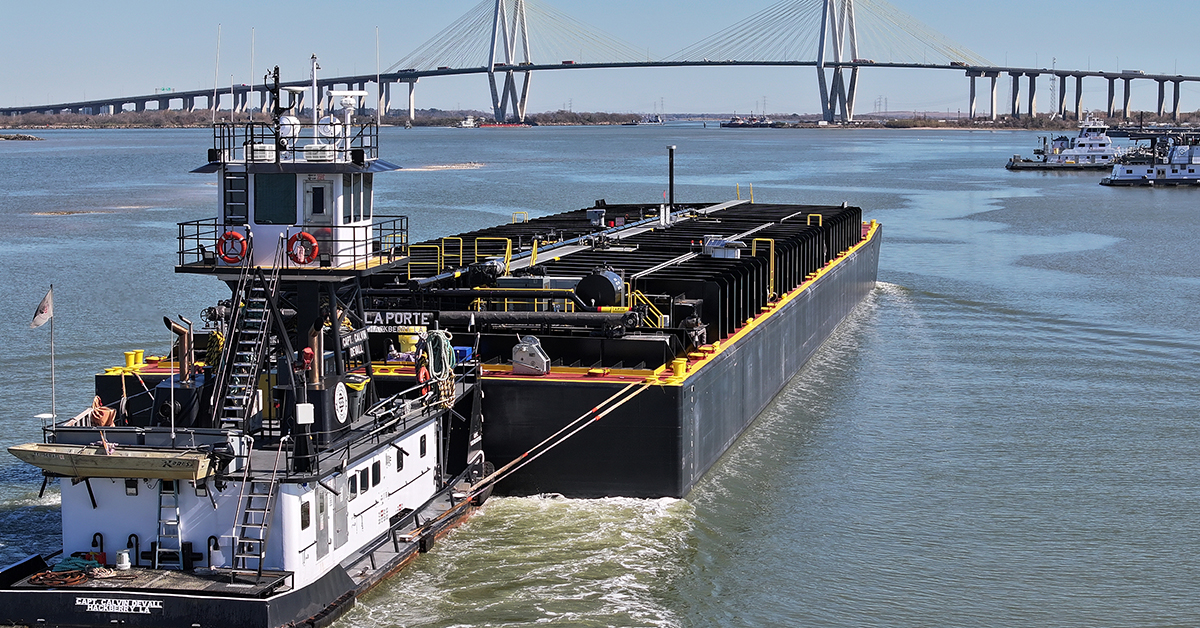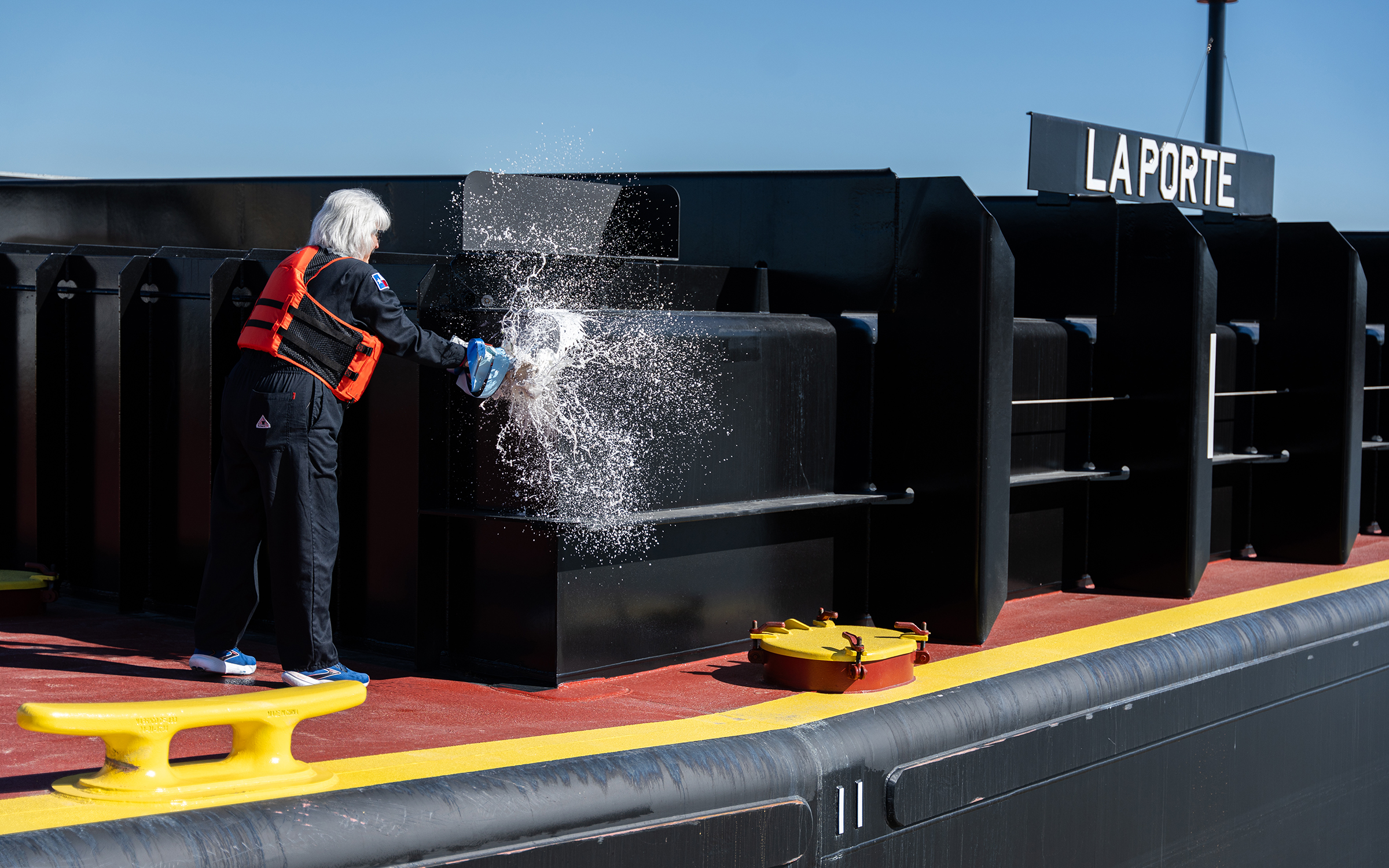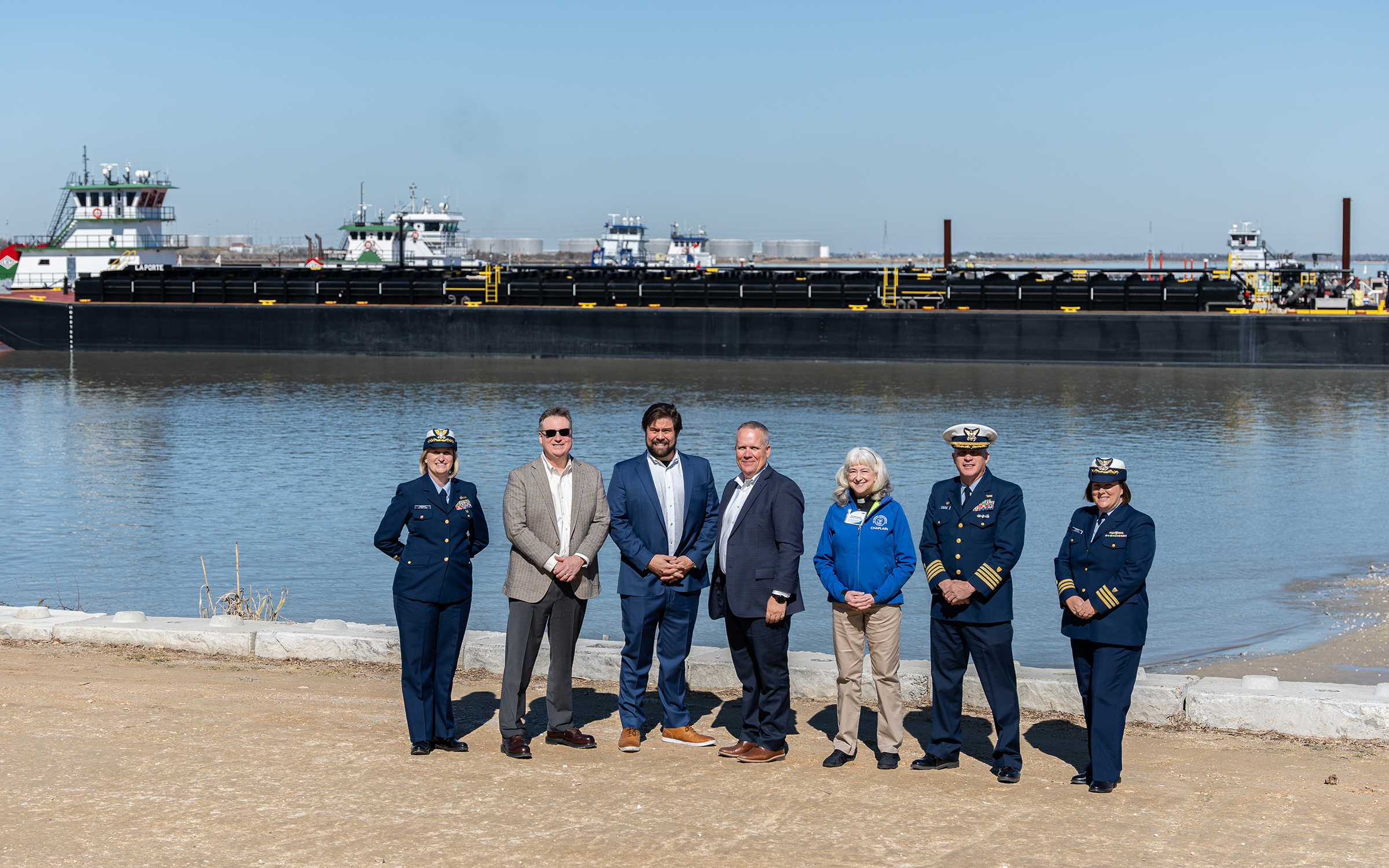Delayed two days by a rare snow storm that hit the Gulf Coast last month, Sulphur, La.-based Southern Devall held a christening ceremony January 24 in La Porte, Texas, for a largest-of-its-kind stainless steel tank barge, named the “La Porte,” designed and built specifically to transport glacial acetic acid for LyondellBasell.
Bob Thomas, chief operations officer for Southern Devall, explained how his company focuses on transporting intermediate through specialty chemicals, rather than black oil and energy commodities, and how LyondellBasell is a leading producer in that space. The idea for the barge La Porte, Thomas said, grew out of discussions with colleagues at LyondellBasell about how best to boost efficiency, timeliness and safety.
“Glacial acetic acid is a cargo that requires stainless steel,” Thomas said. “You can’t move it in lined cargos, carbon steel or anything like that. One of the biggest challenges for LyondellBasell was just the number of voyages they had to do. They move a lot of acetic acid a fairly short distance. Talking with Paul Brunsman, who is the global marine manager at LyondellBasell, I just threw out the idea one day, ‘What if we built you a 30? How would that help you?’”
Brunsman soon got back to Thomas. He wasn’t just interested in Southern Devall building one 30,000-barrel stainless steel barge for moving acetic acid. He wanted two.
“He said, ‘This is huge. It’s absolutely transformative for us,’” Thomas said of Brunsman.
With a 30,000-barrel capacity, the La Porte, built at Conrad’s Orange, Texas, shipyard, is 40 percent larger than previous acetic acid barges. By itself, the La Porte can transport 3,500 metric tons of acetic acid. The barge is also designed to make full use of the 10 feet of draft in the La Porte area.
Simply put, the La Porte’s larger size equates to fewer trips and safer operations.
“One of the more hazardous components of any chemical transportation operation is loading and discharging, when you’re transferring the cargoes,” Thomas said. “The La Porte effectively reduces the number of those operations by half. It reduces the risk of personnel exposure by half. It reduces the number of boat days, where you have to have boats on hire to move barges around, by half. It’s a huge deal for optimizing their supply chain.”
The barge features John Deere Tier 4 pump engines, which reduce emissions compared to Tier 3 engines while also achieving IMO (International Maritime Organization) 2030 emissions goals. The barge’s size equates to improved boat efficiencies as well. According to Southern Devall, the enhanced operational efficiency of the barge will save upwards of 6,500 boat hours annually thanks to a reduced need for standby vessels, while also reducing fuel consumption by 13,000 gallons and carbon dioxide emissions by 140 metric tons.
Southern Devall also built innovative heating capabilities into the barge La Porte, Thomas said. Not only is the barge painted black in order to passively absorb heat, it also features an electric heat tracing system, a first for an unmanned tank barge in the United States. The barge also has traditional steam tracing.
“Traditionally, prior to loading or to discharge, especially in winter months, a barge like this would have to go to a third-party facility where shoreside steam was available,” Thomas said. “This electrical heat tracing system eliminates the need, not only to purchase the steam, but also for the vessel movement from where it’s being stored to where it’s heated to where it’s being unloaded. The La Porte cuts all of that stuff out.”
From concept to completion, the process to build the La Porte was about two years. Much of that was due to the huge amount of stainless steel used to build the barge.
“Conrad had to order the stainless steel eight to 10 months before construction was set to start to make sure it was all it was all here,” Thomas said. “We had a very tight timeline on this first barge, and we are doing two of them.”
Kenny Devall, CEO of Southern Devall, praised Conrad Shipyard for delivering on such an outside-the-box project.
“They have never failed to deliver a barge on time and on budget, every time,” Devall said. “With a big project like this, we tend to lean on these guys a lot. I do know this. This is the most highly technical acetic acid barge in the U.S. at this point, with its self-maintaining heat and everything. Most steel suppliers would not bid on it because of the amount of stainless that was required to be in one place at one time. It pretty much took a global supply of stainless steel to build these two barges.”
Devall said the La Porte and the innovation of Southern Devall continues the legacy of Devall Towing that spanned more than six decades.
“Devall Towing was built on over 60 years of constant barge innovation,” Devall said. “Taking products and figuring out how we can move it more efficiently for the customer and safer for the public. We don’t take that lightly.”
“The highlight of my day, and I know Kenny’s too, is coming up with these kinds of bespoke solutions for customers when they need it,” Thomas said. “We’ve had a lot of success with that over the years, and it’s a lot of fun.”
The January 24 christening of the La Porte featured representatives from Southern Devall, LyondellBasell, the U.S. Coast Guard and the Seamen’s Church Institute. Stacey Casey, assistant operations manager for LyondellBasell’s La Porte facility, served as the godmother of the barge.
The La Porte transports glacial acetic acid within the Port of Houston. According to Southern Devall, the second barge in the series, to be named Channelview, should be delivered within a year.
Featured image caption: The mv. Calvin Devall pushes the barge La Porte in the Houston harbor. (Photo courtesy of Southern Devall)





